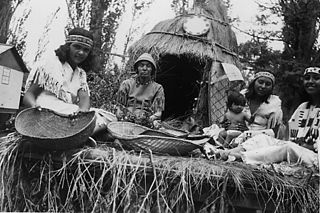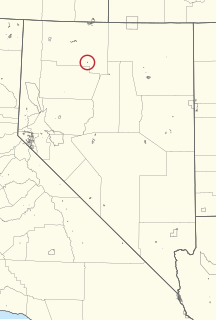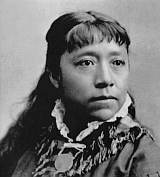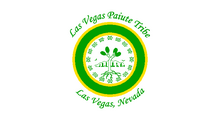The Shoshone or Shoshoni are a Native American tribe with four large cultural/linguistic divisions:

The Southern Paiute people are a tribe of Native Americans that have lived in the Colorado River basin of southern Nevada, northern Arizona, and southern Utah. Bands of Southern Paiute live in scattered locations throughout this territory and have been granted federal recognition on several reservations.

The Reno-Sparks Indian Colony in Nevada was established in the early 1900s by members of related tribes who lived near Reno for work; they became a federally recognized tribe in 1934 after forming a government under the Indian Reorganization Act.

The Shivwits Band of Paiutes is a band of the Paiute Indian Tribe of Utah, a federally recognized tribe of Southern Paiutes in southwestern Utah.

The Bridgeport Indian Colony of California, formerly known as the "Bridgeport Paiute Indian Colony of California", is a federally recognized tribe of Northern Paiute Indians in Mono County, California, United States.

The Burns Paiute Tribe of the Burns Paiute Indian Colony of Oregon is a federally recognized tribe of Northern Paiute Indians in Harney County, Oregon, United States.

The Fort Bidwell Indian Community of the Fort Bidwell Reservation of California is a federally recognized tribe of Northern Paiute Indians in Modoc County in the northeast corner of California.

The Bishop Paiute Tribe, formerly known as the Paiute-Shoshone Indians of the Bishop Community of the Bishop Colony is a federally recognized tribe of Mono and Timbisha Indians of the Owens Valley, in Inyo County of eastern California. As of the 2010 Census the population was 1,588.

The Washoe Tribe of Nevada and California are a federally recognized tribe of Washoe Indians, living in California and Nevada. They are several communities south and east of Lake Tahoe united under a tribal council. The tribe owns over 64,300 acres (26,000 ha) in different parcels.
The Paiute-Shoshone Indians of the Lone Pine Community of the Lone Pine Reservation is a federally recognized tribe of Mono and Timbisha Native American Indians near Lone Pine in Inyo County, California. They are related to the Owens Valley Paiute.
The Paiute-Shoshone Tribe of the Fallon Reservation and Colony is a federally recognized tribe of Northern Paiute and Western Shoshone Indians in Churchill County, Nevada. Their autonym is Toi Ticutta meaning "Cattail Eaters."

The Summit Lake Paiute Tribe of Nevada is a federally recognized tribe of Northern Paiute Indians in northwest Nevada. Their autonym in their language is Agai Panina Ticutta, meaning "Fish Lake Eaters." They are traditionally known as the "Fish Eaters."

The Winnemucca Indian Colony of Nevada is a federally recognized tribe of Western Shoshone and Northern Paiute Indians in northwestern Nevada.

The Yerington Paiute Tribe of the Yerington Colony and Campbell Ranch is a federally recognized tribe of Northern Paiute Indians in western Nevada.
The Paiute Indian Tribe of Utah is a federally recognized tribe of Southern Paiute and Ute Indians in southwestern Utah.
The XL Ranch is an Indian reservation located in Modoc County, north of Burney, California.

The San Juan Southern Paiute Tribe of Arizona is a federally recognized tribe of Southern Paiute Indians in Coconino County, Arizona.

The Te-Moak Tribe of Western Shoshone Indians of Nevada is a federally recognized tribe of Western Shoshone Indians in northeastern Nevada.

The Fort McDermitt Paiute and Shoshone Tribe is a federally recognized tribe of Northern Paiute and Western Shoshone peoples, whose reservation Fort McDermitt Paiute and Shoshone Tribes of the Fort McDermitt Indian Reservation spans the Nevada and Oregon border next to Idaho. The reservation has 16,354 acres (6,618 ha) in Nevada and 19,000 acres (7,700 ha) in Oregon.
The Moapa Southern Paiute Solar Project is a 250 megawatt (MWAC) photovoltaic power plant located in Clark County, Nevada on the Moapa River lands of the Southern Paiute people. The project was commissioned in March 2017 and was constructed by First Solar and its sub-contractors in close consultation with the Moapa Band of Paiutes and federal agencies. It is the first utility-scale solar project to be located on North American tribal lands, and is anticipated to evolve as a model for similar future economic and environmental partnerships.















